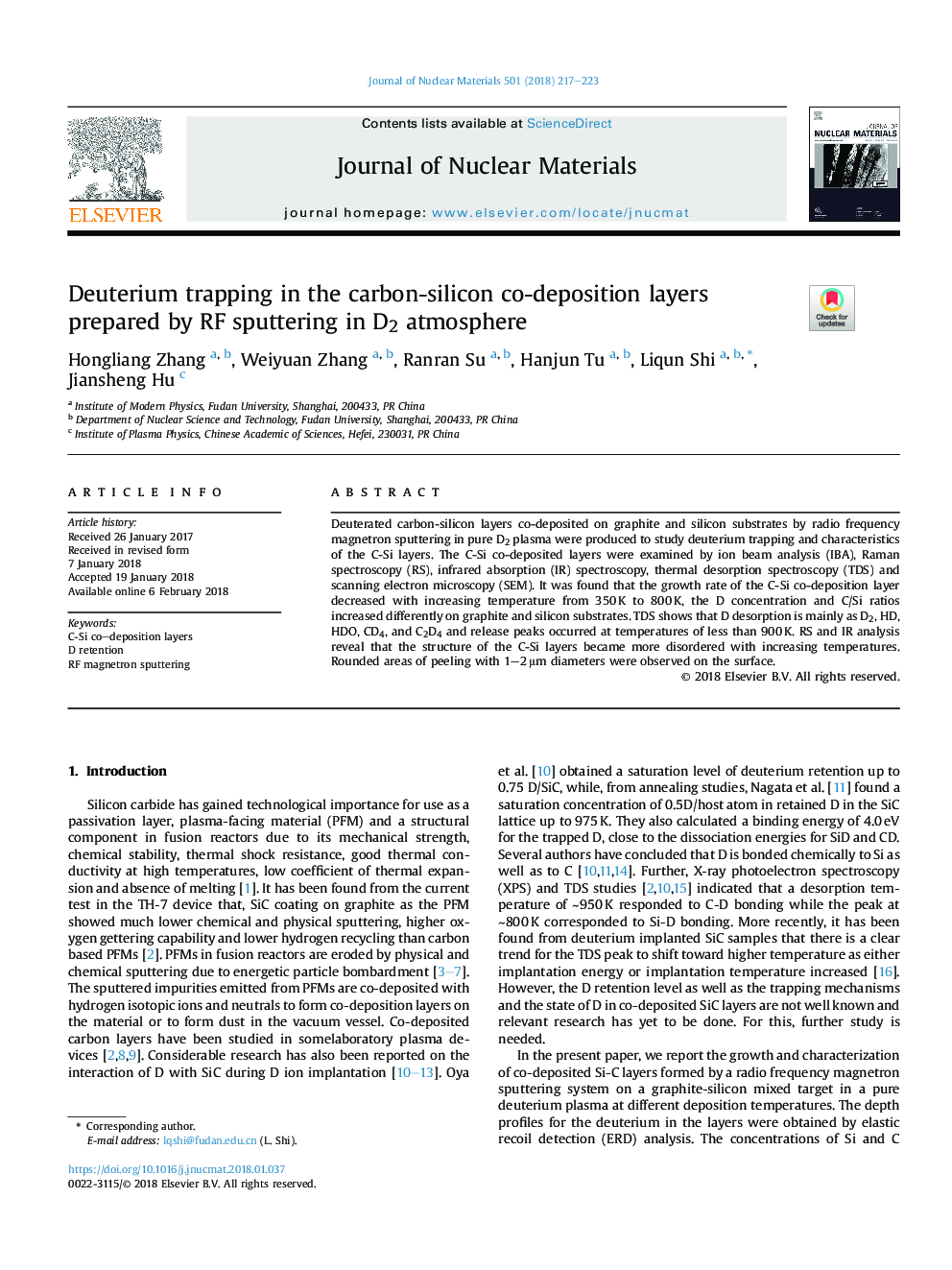| Article ID | Journal | Published Year | Pages | File Type |
|---|---|---|---|---|
| 7963463 | Journal of Nuclear Materials | 2018 | 7 Pages |
Abstract
Deuterated carbon-silicon layers co-deposited on graphite and silicon substrates by radio frequency magnetron sputtering in pure D2 plasma were produced to study deuterium trapping and characteristics of the C-Si layers. The C-Si co-deposited layers were examined by ion beam analysis (IBA), Raman spectroscopy (RS), infrared absorption (IR) spectroscopy, thermal desorption spectroscopy (TDS) and scanning electron microscopy (SEM). It was found that the growth rate of the C-Si co-deposition layer decreased with increasing temperature from 350â¯K to 800â¯K, the D concentration and C/Si ratios increased differently on graphite and silicon substrates. TDS shows that D desorption is mainly as D2, HD, HDO, CD4, and C2D4 and release peaks occurred at temperatures of less than 900â¯K. RS and IR analysis reveal that the structure of the C-Si layers became more disordered with increasing temperatures. Rounded areas of peeling with 1-2â¯Î¼m diameters were observed on the surface.
Keywords
Related Topics
Physical Sciences and Engineering
Energy
Nuclear Energy and Engineering
Authors
Hongliang Zhang, Weiyuan Zhang, Ranran Su, Hanjun Tu, Liqun Shi, Jiansheng Hu,
